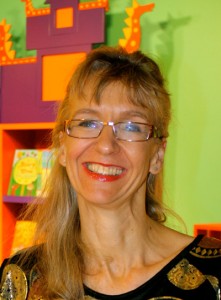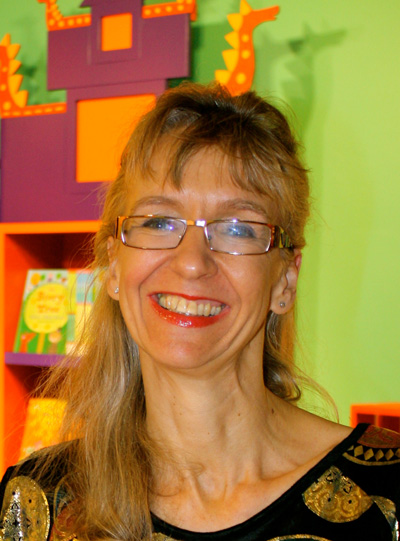Image Credit: goodreads.com
So you want to write a multicultural children’s book. You know you have a great story to tell but how do you know if it really works for kids? What makes for a great story? Is there a market for it? What do publishers look for? To answer all these questions and a bunch more, we interviewed Tessa Strickland, Co-Founder, and Editor-in-Chief of one of the leading publishers of multicultural books, Barefoot Books.
Founded originally in London and expanding to the U.S. five years later, Barefoot has been in the multicultural book business for over 20 years. They began back when very few picture books were written from a global perspective or featured a non-white character in a central role. Today, they publish over 500 stories from around the world that captivate children’s imaginations.
Characterized by colorful and artfully crafted illustrations, they allow children to travel the world from their very own homes.
InCultureParent’s Interview with Tessa Strickland
Co-Founder and Editor-in-Chief of Barefoot Books

First, how do you define multicultural children’s literature?
We look for stories from cultures all over the world and try to avoid stereotypes. A multicultural story at Barefoot Books could be one that is set in an obviously Northern hemisphere, Western setting but features characters of different nationalities. Equally, it could be set in another country (Tanzania, China, India for example).
What are the elements that make for a great story? What do you look for?
I look both for a strong storyline—a story that makes you want to turn the pages and that delivers engaging characters, a great story, and a satisfying ending—and for finely wrought language. I am fascinated by language as music. For small children, in particular, it matters very much that the story reads well aloud. That the child understands every word of the text is less important than the way in which the words and pictures were taken together cast a spell and nourish the child’s emotional development.
What makes one story stand out from another?
It’s said that there are only seven stories in the world, but they can overlap. They are tragedy, comedy, the quest, voyage and return, rebirth, overcoming the monster, and rags to riches. Within these categories, there is endless scope for the creative writer. I’d say it is the writer’s voice that makes one story stand out from another though. You can take a theme, such as rags to riches, and a story, such as “Cinderella” variants of which exist in well over a hundred cultures, and the way it is told will differ quite radically depending on the voice of the writer.
Is writing a multicultural children’s book any different from a non-multicultural children’s book?
Yes and no—I’d say what matters most is authenticity, and perhaps this need is heightened when an author is writing about a culture with which he or she is only partially familiar. I’d say that the success of a book such as “Lola’s Fandango,” which has just been given an Honorable Mention in the Ezra Jack Keats awards, is due to the author’s own experiences as a Spanish-speaking European living in North America.
What are the things to avoid in writing a multicultural children’s book?
Don’t generalize and don’t write about what you don’t know!
Are the better books always written by someone that is from that particular culture or country the books are based on? Does an author need to be from Peru to write a book based on Peru or can someone not from Peru write a good book about it?
In my experience, an author does not have to come from a specific culture in order to write about it well. What I do find, though, is that the author needs to have a first-hand experience of that culture to be able to write with conviction and authority. ‘Don’t write about what you don’t know’ is the rule I encourage authors to go by.
What’s the market for multicultural children’s books and give your 20 years in the business, how has it evolved over the years?
This is a very interesting question. When we started Barefoot Books, very few non-white children were represented in anything but cameo roles in picture books. We set out to introduce children from many cultures and to do so in an integrative way. Our own publishing program has evolved, in part dictated by our continued commitment to representing other cultures and in part by the requests we receive from customers.
A trend which we are keenly aware of is the number of interracial marriages and partnerships—I don’t have statistics on hand and I can’t tell whether the feedback we get reflects wider social trends or wider awareness of our brand, but it is interesting to note how many of the families who visit our studios in Oxford and Concord are families with one or more parents from different cultures. Also, we often get requests from customers for stories from particular parts of the world, so my perception is that a lot of parents actively look for stories that help their children to understand their cultural heritage.
Are there any particular cultures, ethnicities, races, religions, or countries which you feel need better representation in children’s books?
I think there are lots! I was especially delighted to discover the writing of Danish author Jorn Riel a few years ago. His “Inuk Quartet” introduces young readers to a Viking boy, Leiv, who is shipwrecked off the coast of Greenland and rescued by two Inuit children. Leiv learns from his Inuit friends how to live peaceably and co-operatively, in step with the rhythms of the natural world.
At a time in human history when our collective addiction to oil and to speed is causing huge environmental damage, and when conflict has destroyed and continues to destroy the lives of so many innocent people, it is very inspiring to read about the Inuit way of life and the deep understanding it reveals about the interdependence between people and the land.
We have developed all kinds of clever technologies in the past hundred and fifty years, but without the wisdom to use them with restraint, we risk continuing to destroy so much that is precious and creating a dismal future for the generations that come after us. For me, any story from any culture which helps today’s parents and children to appreciate the importance of living more sustainably is worthy of attention.
Do you read unsolicited manuscripts?
Yes, when we have the time. At the moment, our program is full and we have to focus on what we have already commissioned. We have an area on our website which advises authors when we are open to unsolicited material.
If someone has an idea for a book, are you interested in pitches or only finished stories?
The story does not have to be finished, but it does need to be sufficiently well developed for the quality of its language and the strength of the characterization to be apparent.
Should an author find an illustrator themselves and send you a finished story with illustrations or do you have your own illustrators you work with?
Sometimes authors are also exceptional illustrators, but we usually assess stories on their own merits and then commission the illustrator separately.
What advice would you give someone who has an idea for a multicultural children’s book?
I’d encourage the writer to get the idea onto paper and then to try it with children of the age for which he or she is writing. We do this regularly with manuscripts we are working on and the feedback we get from children is always a great help.
Is there anything else you would like to add?
Check what is already in the market and look closely at the techniques of writers whose work you admire—notice the effect on you as a reader of these techniques. Try writing your story in different ways—e.g., as dialogue, in the first person, in the third person. Be experimental. Feel the difference between obvious adjectives and more unusual ones and none at all. Be your own best editor and make sure that everything you write moves the story forward. Listen to your critics, persevere, and above all listen to your own inner voice.
Thank you, Tessa!




































Very insightful interview! Thanks, Tessa!
The first rule of writing and maybe the only writing rule is; ONLY WRITE ABOUT THINGS YOU KNOW!
I believe the only reason why white people are all of sudden writing Black books, is this simple, to be included in another genre so they can get paid. White folks appropriate black culture to make money, regardless of how many qualified Black authors there are waiting for the chance to be published.
For the first time in my life that I’ve ever heard there is a market for Black stories, and as soon as this opportunity opened up, all of a sudden white authors are interested in Black people. Why, why now? I say it’s because of greed.
Our U.S. history books have relegated three to four pages to represent the history of the African American experience, and not one Black person was asked if it was accurate. No one can tell my story better than I can.
The playing field must be leveled, stories that aren’t yours are off limit. If you’re a white author and you believe in equality, prove it, by stop writing so-called black books and leave it to the experts, THE AFRICAN AMERICAN!
What makes White people think you’re an authority on black life?
Why do you think it’s okay to write our stories?
You’re the only race who steals, misappropriate from every culture without paying reparations to the people who you’ continue to harm.
Why is it okay for you to write to for our children?
The white female teacher is the number person responsible for the incarceration of African Americans. You might ask, How is this possible? The White Female Teacher is the number one demographic who has been responsible for teaching all of the U.S. children.
She decides who gets kicked out of school and who is forever labeled as a problem child. They’re kicked out of school, then to juvenile detention, eventually to prison. Which is referred to the CLASSROOM TO PRISON PIPELINE. Do you realize that they build prisons according to how many black children are suspended from school each year, starting at third grade?
So, NO, YOU CAN’T WRITE BOOKS FOR OUR CHILDREN.
I’m not upset or bitter. Sometimes the truth can hurt, but it’ worth accepting it because it’s guaranteed to FREE you.